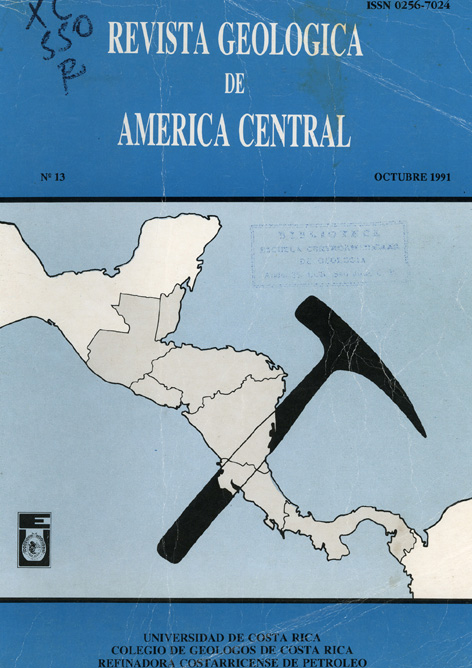Abstract
The Upper Cretaceous/Cenozoic basins of Costa Ricaare underlain by oceanic crustand located along the western margin of the Caribeean Plate. Since Upper Cretaceous time, an intraoceanic arc was formed along the western margin of the Caribeean Plate. This arc marked the beggining of the subdution of the Farallon Plate in the region and also the creationof the first land bridge joining North and South America. Continued subdution of the Farallon Plate from Campanian until the present, created a convergent marginal tectonic setting; with, from SW to NE: a trench, an outer arc, a forearc region, a volcanic arc and a backarcr egion. Localized platforms of shallow-water carbonates, overlain by extensive cyclical turbidites system, characterized the sediments of most of the basis until the Eocene, when a major tectonic compressive event affected the area. As well, about this time, a major sinistral east-west fault (COSTA RICA TRANSCURRENT FAULT SYSTEM) divided the region into north and south segments and transtensional or pull apart basins developed along this major fault system. In the Oligocene time, the north segment was emerged and subject to erosion, whereas in the south segment the sedimentation continued. From Miocene on, shallow marine deposition was widespread in both sements. In the north segment, and extensional stage in the backarc region, created a structural depression filled with Neogene sediments. About the same time, the south segment experienced compressional tectonicis due to noth-directed movementof the Panama block. Later in the Pleistocene, northeasterly-directed shallow subdution of the thick Cocos Ridge, resulted in adiotional thrusting and the developmentof a "foreland" basin, both, in the back arc and fore arc regions.
Organic-rich, deep water, marginally to termally mature source rock, from Cretaceous age, occur in several basins. Also, source rocks of moderate to high TOC values are present in all basins, in the Tertiary. Potential carbonate reservoirs in some of these basins include shallow water carbonates, rudistic reef buildups and grainstone accumulations. Potential clastic reservoirs include turbidite sandstones, regressive deltaic deposits and near-shore porous sandstones. The presence of potential structural and stratigrafic traps in all basins, confer an important as far as the pretoleum potential is concern.






